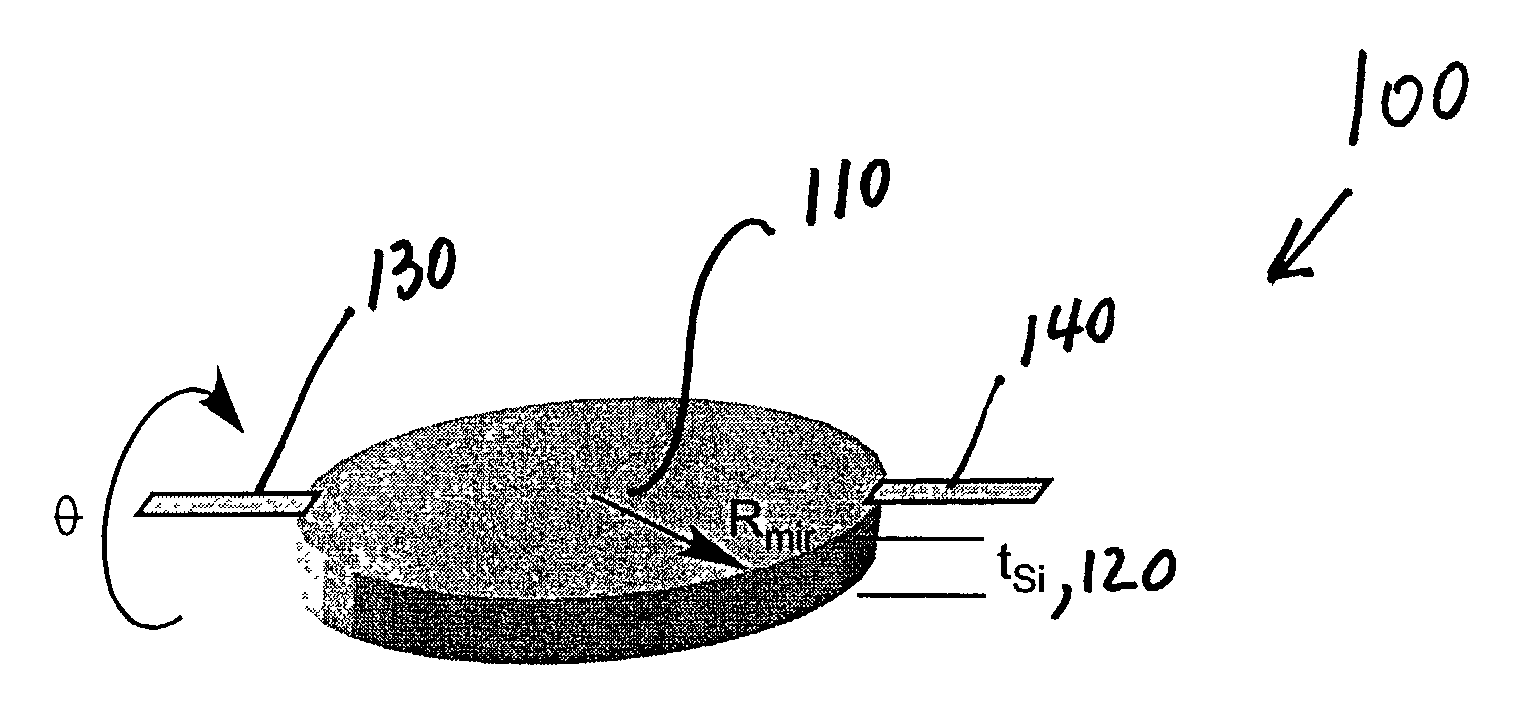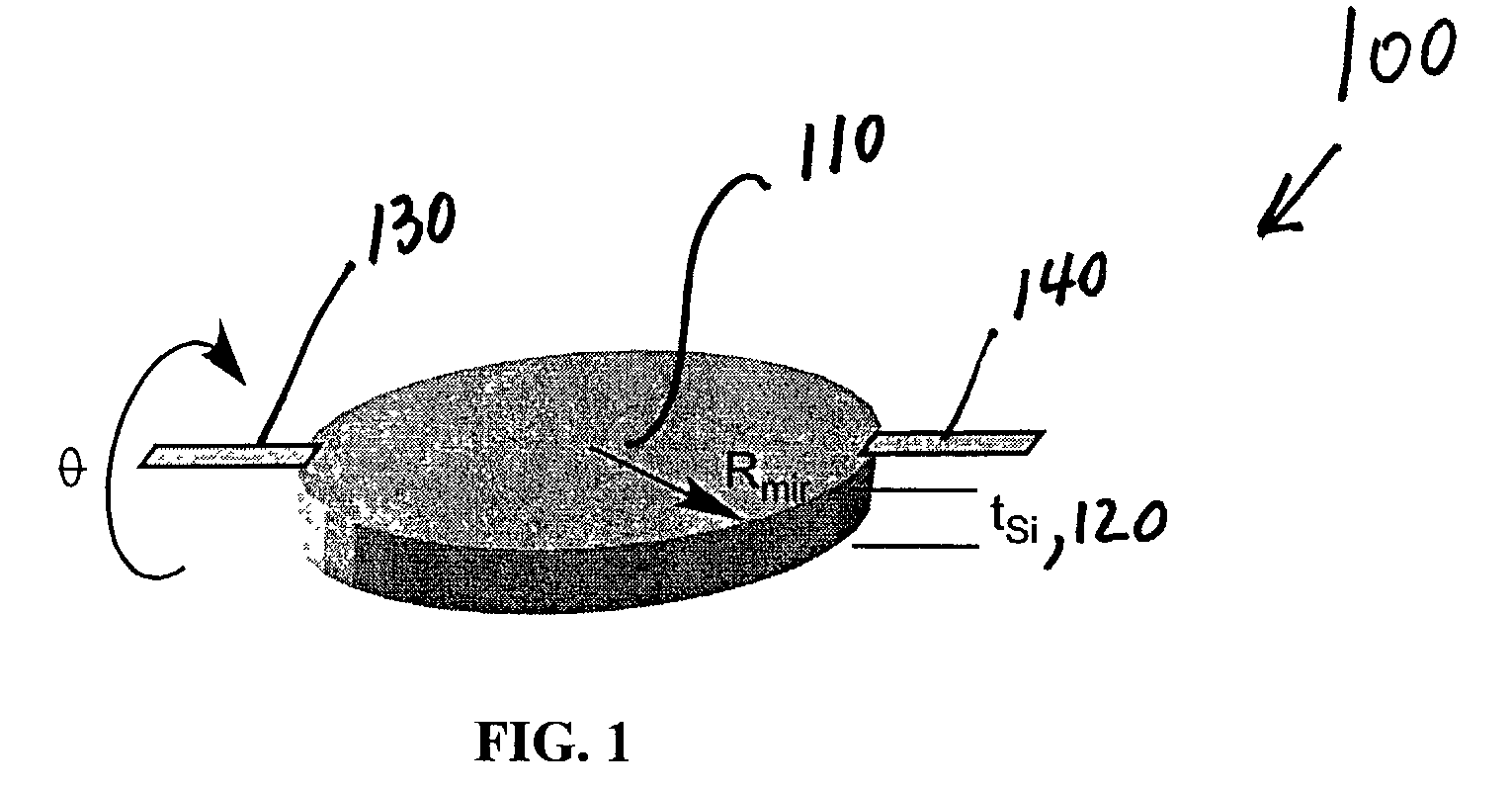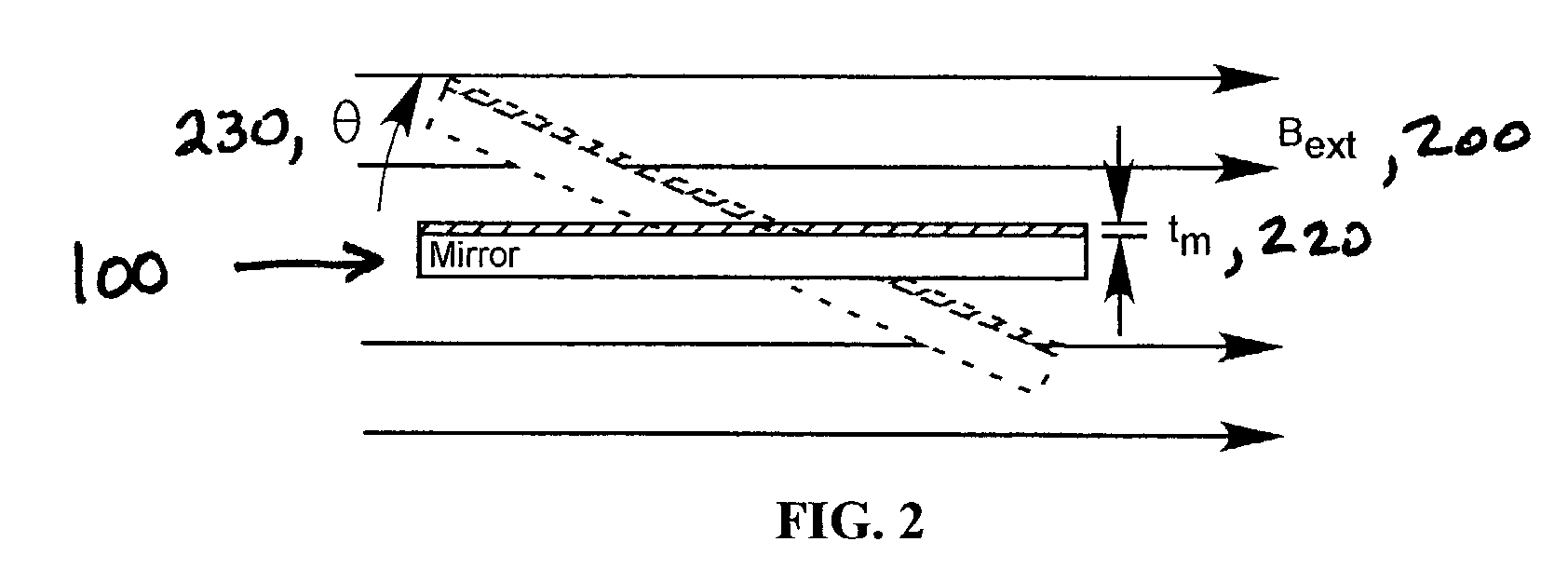Magnetic damping for MEMS rotational devices
- Summary
- Abstract
- Description
- Claims
- Application Information
AI Technical Summary
Benefits of technology
Problems solved by technology
Method used
Image
Examples
Embodiment Construction
[0031]Reference will now be made in detail to the present preferred embodiments of the invention, examples of which are illustrated in the accompanying drawings. Wherever possible, the same reference numbers will be used throughout the drawings to refer to the same or like parts.
[0032]Several preferred embodiments of the present invention showing the effectiveness of magnetic damping for the plate rotating in a high magnetic field gradient will be described and analyzed infra as follows: (1) a conductive plate rotating about a single axis in a uniform magnetic field; (2) a conductive plate rotating about two axes in a high magnetic field gradient region; and (3) a conductive rectangular plate rotating in a magnetic field.
Plate Rotating about a Single Axis in a Uniform Magnetic Field
[0033]Referring now to FIG. 1 a circular mirror 100 is shown in accordance with a preferred embodiment of the present invention having a radius Rmir 110 and a thickness tSi 120. Circular mirror 100 rotate...
PUM
 Login to view more
Login to view more Abstract
Description
Claims
Application Information
 Login to view more
Login to view more - R&D Engineer
- R&D Manager
- IP Professional
- Industry Leading Data Capabilities
- Powerful AI technology
- Patent DNA Extraction
Browse by: Latest US Patents, China's latest patents, Technical Efficacy Thesaurus, Application Domain, Technology Topic.
© 2024 PatSnap. All rights reserved.Legal|Privacy policy|Modern Slavery Act Transparency Statement|Sitemap



